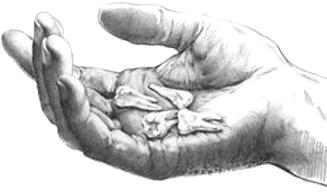Is tooth loss inevitable as we age?
Maintaining healthy teeth and gums can help you keep your teeth for life
 In the late 1500's, author William Shakespeare and others spoke and wrote about getting long in the tooth as the gums recede as you age. Not so long ago, it was rare for an older person to go to bed without taking out his or her dentures. However, edentulism (toothlessness) has been declining in this country since the 1950s. According to the Centers for Disease Control and Prevention (CDC), approximately 25 percent of the current population over age 65 is toothless.
In the late 1500's, author William Shakespeare and others spoke and wrote about getting long in the tooth as the gums recede as you age. Not so long ago, it was rare for an older person to go to bed without taking out his or her dentures. However, edentulism (toothlessness) has been declining in this country since the 1950s. According to the Centers for Disease Control and Prevention (CDC), approximately 25 percent of the current population over age 65 is toothless.
Periodontal disease is the leading cause of tooth loss in older adults. "However, people should realize that while their likelihood of developing periodontal disease does increase with age, maintaining periodontal health can help you keep your natural teeth for a lifetime", says Dr. Larry P. Bleier. "Not everyone can avoid the signs of aging, such as wrinkles or the need for bifocals, but periodontal disease can often be prevented."
A variety of risk factors make older individuals especially susceptible to periodontal disease especially the presence of other diseases. Research has shown a connection between periodontal disease and other inflammatory diseases of aging, such as diabetes, rheumatoid arthritis or heart disease. Other factors that may influence the progression of gum disease include medications, mental health, worsening memory, diminished salivary flow and functional impairments.
"To help prevent periodontal disease and maintain a healthy, toothy smile as you age, it is important to keep your dental professional up to date on any changes in your overall health," said Dr. Bleier. "The goal is to make adjustments in oral care before these changes result in full-blown problems in the mouth."
Dr. Bleier recommends comprehensive daily oral care, including regular brushing and flossing, and other hygiene products tailored to your individual needs to avoid gum disease. If gum disease develops, a consultation with a periodontist, can lead to effective treatment based upon sound research and the use of safe well studied techniques. A periodontist is a dentist with three years of additional specialized training in the prevention, diagnosis and treatment of diseases affecting the gums and supporting structures of the teeth and in the placement of dental implants. "An ounce of prevention and early detection is worth a pound of cure."